Today we have important news to share with you. After 34 years, Servoflo will discontinue its distribution business at the end of 2024. The global nature of our business has dictated that we seek a larger partner to serve our loyal customers who frequently design, source, and manufacture in all corners of the globe.
To that end, we will transition many customers to Angst+Pfister this year. Angst+Pfister (A+P) is an international distributor and manufacturer, headquartered in Zurich, Switzerland. They have a US division and lengthy experience with many of our factory partners in Europe. Our long-standing global relationship with A+P makes us confident you will be in good hands with them.
What does this mean for you, our cherished customer?
All current orders will be shipped as committed by Servoflo. Expediting is possible as long as our inventory can meet an earlier date. All orders remain non-cancellable and non-returnable. If we have an excess inventory of parts you have previously ordered, we can accept orders anytime. In principle, A+P will begin accepting orders in May 2024. For the next several months, we will work closely with A+P to ensure a smooth transition of key personnel and business practices. Those with blanket orders, please be assured we will work closely with you to ensure you receive all your deliveries and we will put you in touch with the appropriate contacts for future orders. We will handhold every customer during this transition.
A+P will become the North American representative for Fujikura, Sensormate, Metallux, Consensic, HYB, and Siargo. While our two companies will not overlap in order taking, Servoflo will support A+P and our customers during this critical transition. A+P is a large, worldwide organization with in-house technical experts in various sensor technologies, applications, and architectures. Angst+Pfister can be contacted via their email box info.apus@angst-pfister.com for any sample, quote, order, or technical information request. For all other factories not mentioned, you may contact them directly.
Our factory partners have been fully supportive of this transition as they see the potential of A+P to support you:
"Fujikura has worked with Angst & Pfister in Europe for over 30 years. We are pleased to extend our relationship to North America with the new U.S. division of Angst & Pfister. We are confident our customers will be in capable hands." - Jason Peng, President of Fujikura America, Inc.
“Metallux is grateful for Servoflo’s past work in North America, and we are looking forward to continuing our growth and presence with our new Angst & Pfister partnership. We are confident in their technical knowledge and professional expertise.” – Massimo Romano - General Manager, Metallux SA
“Sensormate is excited to be part of the Angst & Pfister team in North America" - Leo Wu, President of Sensormate Enterprise Co., Ltd.
If you have any questions or concerns, contact us at info@servoflo.com or reply to this email. You may also call our office at 781-862-9572.
We are eternally grateful and humbled to have been in this business for 34 years. We have enjoyed this journey and have been privileged to learn from our customers who design and manufacture the best products in their markets.
Sincerely,
David Ezekiel, Owner
david@servoflo.com
About Angst+Pfister
Angst+Pfister is a leading supplier of technical components and comprehensive solution provider for a wide range of industries and has been ensuring business continuity and serving the world’s leading manufacturers for over 100 years. Their professional capabilities center on being an engineering-led solution provider with in-depth customer application knowledge; globally sourcing a wide range of high-quality standard and customized industrial components; and proactively serving original equipment manufacturers (OEMs) around the globe through multiple sales channels.

Angst+Pfister North America Inc. | 10391 Brecksville Rd. | Brecksville, OH 44141 | USA
Phone +1 (440) 375-5212


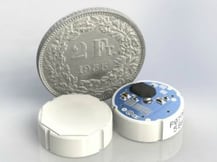
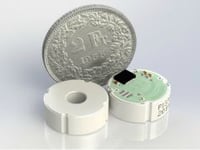

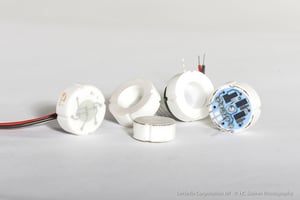 Ceramic sensors can operate in harsh environments with extreme pressure and temperature factors at play due to their robust, stable, and cost-efficient nature. They are also valuable in applications where harsh chemicals may be present. As such, ceramic pressure sensors often present the best solution for difficult measuring applications. Many types of ceramic pressure sensors exist to address a broad range of challenges in numerous industries.
Ceramic sensors can operate in harsh environments with extreme pressure and temperature factors at play due to their robust, stable, and cost-efficient nature. They are also valuable in applications where harsh chemicals may be present. As such, ceramic pressure sensors often present the best solution for difficult measuring applications. Many types of ceramic pressure sensors exist to address a broad range of challenges in numerous industries.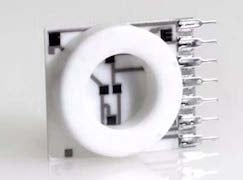 The
The 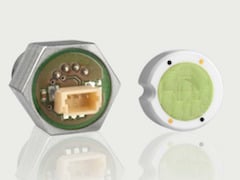 Servoflo's sensors come in a variety of sizes, ranging from 9 mm (model
Servoflo's sensors come in a variety of sizes, ranging from 9 mm (model 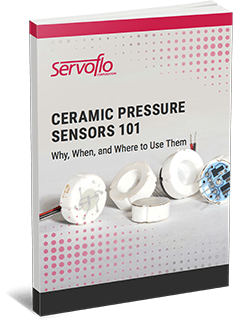
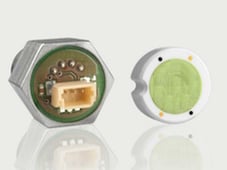



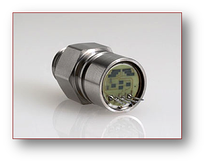 Unlike typical board mount pressure sensors, ceramic pressure sensors do need to be packaged. Our team of experts can assist you in designing the ideal package for your application. Furthermore, Servoflo offers a special evaluation mounting kit called MEKIT 0400 to help users test ceramic pressure sensors. This kit costs $145 and is useful for the following 18 mm diameter Metallux sensors: ME501/ME505/ME662/ME651/ME75X/ME77X/ME780.
Unlike typical board mount pressure sensors, ceramic pressure sensors do need to be packaged. Our team of experts can assist you in designing the ideal package for your application. Furthermore, Servoflo offers a special evaluation mounting kit called MEKIT 0400 to help users test ceramic pressure sensors. This kit costs $145 and is useful for the following 18 mm diameter Metallux sensors: ME501/ME505/ME662/ME651/ME75X/ME77X/ME780.
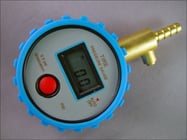 Servoflo, a premier supplier of pressure, mass flow, environmental sensors and micropumps, is pleased to announce expansion of its design engineering services for custom sensor development. The objective is to be a primary resource for customers who require modification or customization of sensors and how they are integrated into product designs. Services include but are not limited to:
Servoflo, a premier supplier of pressure, mass flow, environmental sensors and micropumps, is pleased to announce expansion of its design engineering services for custom sensor development. The objective is to be a primary resource for customers who require modification or customization of sensors and how they are integrated into product designs. Services include but are not limited to: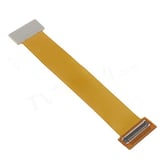 This one-stop solution provides customers with efficient and reliable design expertise without having to manage multiple vendors as well as streamlining assembly. Purchasing a complete solution saves customers money and time. Often, a bill of materials is reviewed and pressure is put on individual component costs. This strategy neglects the labor needed to inspect, integrate, and test various separate components such as a sensor element, cable, and package. A complete sensor solution can actually reduce overall bill of materials and labor costs. This sensor design strategy is also important for customers who may not have design expertise in these areas.
This one-stop solution provides customers with efficient and reliable design expertise without having to manage multiple vendors as well as streamlining assembly. Purchasing a complete solution saves customers money and time. Often, a bill of materials is reviewed and pressure is put on individual component costs. This strategy neglects the labor needed to inspect, integrate, and test various separate components such as a sensor element, cable, and package. A complete sensor solution can actually reduce overall bill of materials and labor costs. This sensor design strategy is also important for customers who may not have design expertise in these areas.

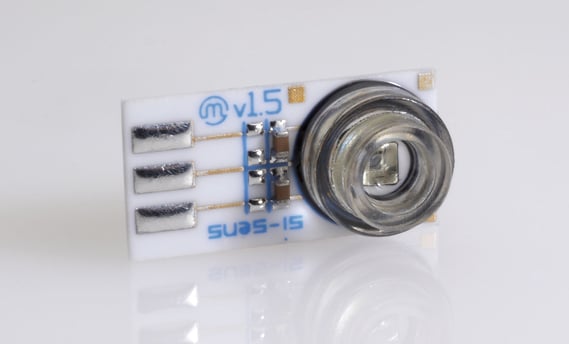 Silicon pressure sensor for home boiler: A thick film hybrid circuit was designed for better stability in a harsh temperature and humidity environment. The stable and rigid substrate had the die pressure sensor glued onto it. The coefficient of thermal expansion (CTE) of the Alumina is lower compared to a standard PCB.
Silicon pressure sensor for home boiler: A thick film hybrid circuit was designed for better stability in a harsh temperature and humidity environment. The stable and rigid substrate had the die pressure sensor glued onto it. The coefficient of thermal expansion (CTE) of the Alumina is lower compared to a standard PCB.
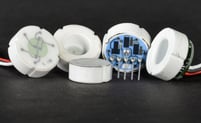 Ceramic pressure sensors by Metallux
Ceramic pressure sensors by Metallux
 Flush Mount Versus Monolithic: In a flush mount sensor such as the ME77X Series, the sensor side exposed to the pressure media is flat and smooth. A monolithic sensor such as the ME75X has an indentation in the center of the exposed side. Why choose one or the other? If a customer is making an absolute or sealed gauge sensor, then flush mount is ideal as they have a fixed reference. Flush mount also come in lower (0.5 bar) and higher pressures (up to 600 bar). Flush mount ceramic sensors also have no dead volume of the pressure media.
Flush Mount Versus Monolithic: In a flush mount sensor such as the ME77X Series, the sensor side exposed to the pressure media is flat and smooth. A monolithic sensor such as the ME75X has an indentation in the center of the exposed side. Why choose one or the other? If a customer is making an absolute or sealed gauge sensor, then flush mount is ideal as they have a fixed reference. Flush mount also come in lower (0.5 bar) and higher pressures (up to 600 bar). Flush mount ceramic sensors also have no dead volume of the pressure media. When designing a new product, looking for components can be daunting. Often times, designers must decide whether to purchase an off-the-shelf pressure sensor or design their own. This post helps clarify the criteria designers can apply when making this important decision.
When designing a new product, looking for components can be daunting. Often times, designers must decide whether to purchase an off-the-shelf pressure sensor or design their own. This post helps clarify the criteria designers can apply when making this important decision.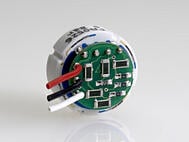 Ceramic pressure sensors typically use thick-film technology to create a low cost, stable, and robust media-compatible pressure sensor. These sensors are an excellent alternative to more expensive stainless steel pressure sensors or oil-filled sensors using silicon piezoresistive sensing elements for any application where an o-ring can be used.
Ceramic pressure sensors typically use thick-film technology to create a low cost, stable, and robust media-compatible pressure sensor. These sensors are an excellent alternative to more expensive stainless steel pressure sensors or oil-filled sensors using silicon piezoresistive sensing elements for any application where an o-ring can be used. Packaging these sensors can be customized for your application or through use of standard housing which is also available. See the image here which shows standard housing. The sensor can be easily embedded in vales and pumps, opening the possibilities for better control in your application.
Packaging these sensors can be customized for your application or through use of standard housing which is also available. See the image here which shows standard housing. The sensor can be easily embedded in vales and pumps, opening the possibilities for better control in your application.